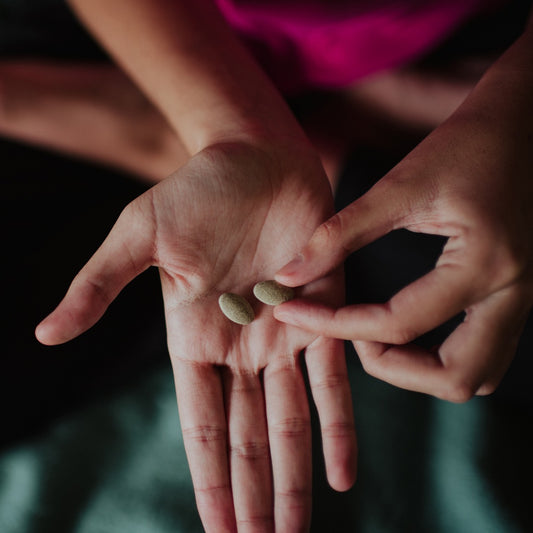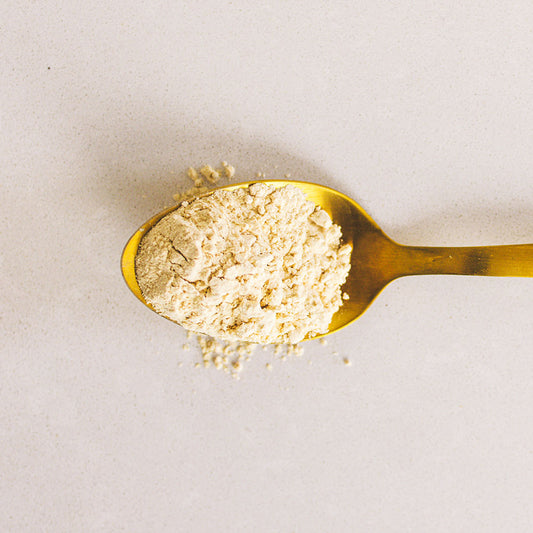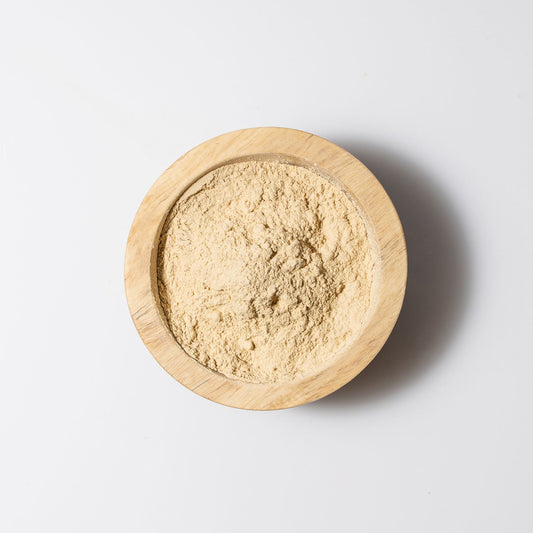The Menstrual Cycle Part 1: What Is a Healthy Cycle?
A woman's relationship with her menstrual cycle is often a deeply personal one. Our experiences and our relationships with our own cycles are as individualized as we are, and whether you love it, hate it, or hardly give it much attention, your cycle has a purpose (beyond reproduction).
In fact, it plays a very important role in
That begs the question—what is your cycle telling you, and what on earth does a balanced cycle look like?
The Menstrual Cycle Is a Window to Your Health
According to Ayurveda, the menstrual flow itself is a byproduct of the first, most basic tissue layer (or
This tissue layer can act as a gatekeeper for health. The body is made up of seven tissue layers, each feeding into and nourishing the next.
In short, it embodies our “nutrient transport system,” and it is directly responsible for menstrual health. 1, 2
You might think of this tissue layer as the foundation of our house. And because the main function of this layer is nutrition, the quality of rasa dhatu affects the quality of our health, in large and small ways, which, in turn, affects the quality of our life. In fact, Dr. Vasant Lad says that rasa dhatu “is the first and foremost juice of all life.” 3
As the first tissue layer, it is also the most dynamic and responsive to the qualities of the
What Your Cycle Is Telling You
This means that if imbalances begin to manifest in this tissue layer, it's going to affect your cycle. And, if you have imbalances showing up in your cycle, you are sure to find similar imbalances throughout the body since the plasma is the foundation from which all other tissue layers are produced.
Tune into this tissue layer, and you get feedback relatively quickly about how your diet and lifestyle is affecting your health. You can use your cycle to interpret what your body is telling you.
By slowing down and taking (even just a brief) pause each month to tune into your body and the nature of your menstrual cycle, you can learn tons about your body and what is going on with it. Catching and correcting imbalances that show up at this stage is going to keep imbalances from going deeper in your physiology, paving the way to greater health overall.
For instance, if you note just a tinge more cramping than normal and, after some reflection, you realize you had a series of trips during the previous month, you can learn that your body did not do so well with the travel. Or perhaps your cycle has been uncharacteristically erratic, just as your schedule has been of late.
With these insights, you may conclude that you want to either reduce the amount of travel at one time, or perhaps you want to take more time to build a more consistent routine. This type of inquiry can be fun and insightful!

Imbalances in the Menstrual Cycle
It's great to know the end goal (a healthy, balanced cycle!), but this is only helpful if we provide some context about where you're at now, in the
The best place to start is with the doshas. When the doshas begin to interfere with the natural ebb and flow of the cycle, you begin to veer away from the qualities of a balanced cycle. (Are you not sure about your doshas and what your current imbalance is? Take our Ayurvedic Profile™ quiz to find out!)
Here's a quick glance at how
- The Vata Cycle. Vata cycles are typically light, thin, and dry, with a dark flow. You may experience physical discomforts like prickling, sharp, or spasmodic sensations, often in the lower abdomen or back. You may have difficulty sleeping. Emotionally, you may experience more anxiety, nervousness, and fear—all signs of excess vata.
- The Pitta Cycle. Excess pitta in the cycle brings its hot and sharp qualities and is characterized by a heavier flow that can be hot, profuse, and fleshy or foul smelling. Pitta may also bring sensations of excess heat in the body, along with the quintessential pitta emotions of anger and irritability.
- The Kapha Cycle. Excess kapha in the cycle often brings those kapha qualities of stagnation, dullness, and heaviness, and menstruation is heavier and longer with unctuous qualities in the flow. Kapha can cause an overall dull discomfort, heavy kapha emotions like melancholy and emotional eating, and occasional swelling, bloating, and increased sleep.
Herbs are a wonderful way to support the doshas. Women's Supportwas created especially with a woman's path to balance in mind. It's
A Healthy Menstrual Cycle
We realize that a “normal” cycle will have a wide circumference, giving our individual constitutions, circumstances, and time of life.
With that said, what is considered a healthy cycle? According to the classical texts of Ayurveda, a healthy cycle has these qualities:
- Occurs once a month
- Is bright red without clots or mucus
- Is free of pain
- Is free of bloating
- Is free of irritability, depression, or mood-swings
- Does not stain clothing (a sign of
- Has no odor that is foul
- Has an amount that is on average about four anjalees (one anjalee is the amount of liquid that fits into one of your cupped hands)
- Has a free flow without spotting before the full flow, and with little spotting afterward
It just takes some dedication. You are striving for health at the most basic tissue layer, which requires a strong digestive fire (
Coming Back to Balance with Ayurveda
This is the first article in a four-part series. In the next three articles, we talk more in-depth about each of these three imbalances in the menstrual cycle and how to specifically bring balance in those situations.
In the meantime, I encourage you to follow some or all of these simple tips:
- Start a menstrual calendar. Note when you start, if you have any symptoms before, during, and after (even as subtle as slight constipation or hardening of stool before the cycle), what the flow is like (any days of spotting, when you start a full flow, how many pads you use or would have gone through), and when it ends. By keeping track, you can begin to decipher what a “normal” cycle is for you.
- Slow down during your menstrual cycle. Even if it means taking a twenty-minute break at the end of your day where you do nothing but just breathe. Become highly aware of your body and its subtle changes. See if you can correlate changes with anything that changed or was highly impactful during the month before.
- Check in with your digestion. Remember earlier on when we said that health in the most basic tissue layer is affected by digestive strength, the doshas, and removing any toxins? Well, a great starting place is to get in touch with your digestion! How is your appetite and how well do you digest your meals?
- Identify what type of imbalance is showing up (vata, pitta, or kapha?). If you find you have more than one imbalance, note that and note which type of cycle is most predominant. (Taking our free Ayurvedic Profile™ quiz can help with determining what dosha or doshas are out of balance and, if you have more than one, which to focus on first.)
- Start to make some changes. Once you know which dosha could use some attention, begin to highlight what supportive diet and lifestyle choices you can make.
- Tune into your current attitude. What is your relationship with your cycle? Do you dread and resent your cycle, or do you appreciate it for what it is telling you? If you find you have trouble embracing your cycle, what can you do to begin to develop a new attitude toward it?
- Stick with it! It can take time to kindle agni, get rid of ama, and balance doshas. Do not give up! You can always consult with an Ayurvedic practitioner for more help and advice.
- Keep reading. For more information, read the Guide to a Healthy Menstrual Cycle, which has all of this information and more!
It is absolutely possible for you to achieve a balanced, comfortable cycle by applying Ayurveda to your life. While it can take a little patience and a commitment to yourself, it is so worth it!










